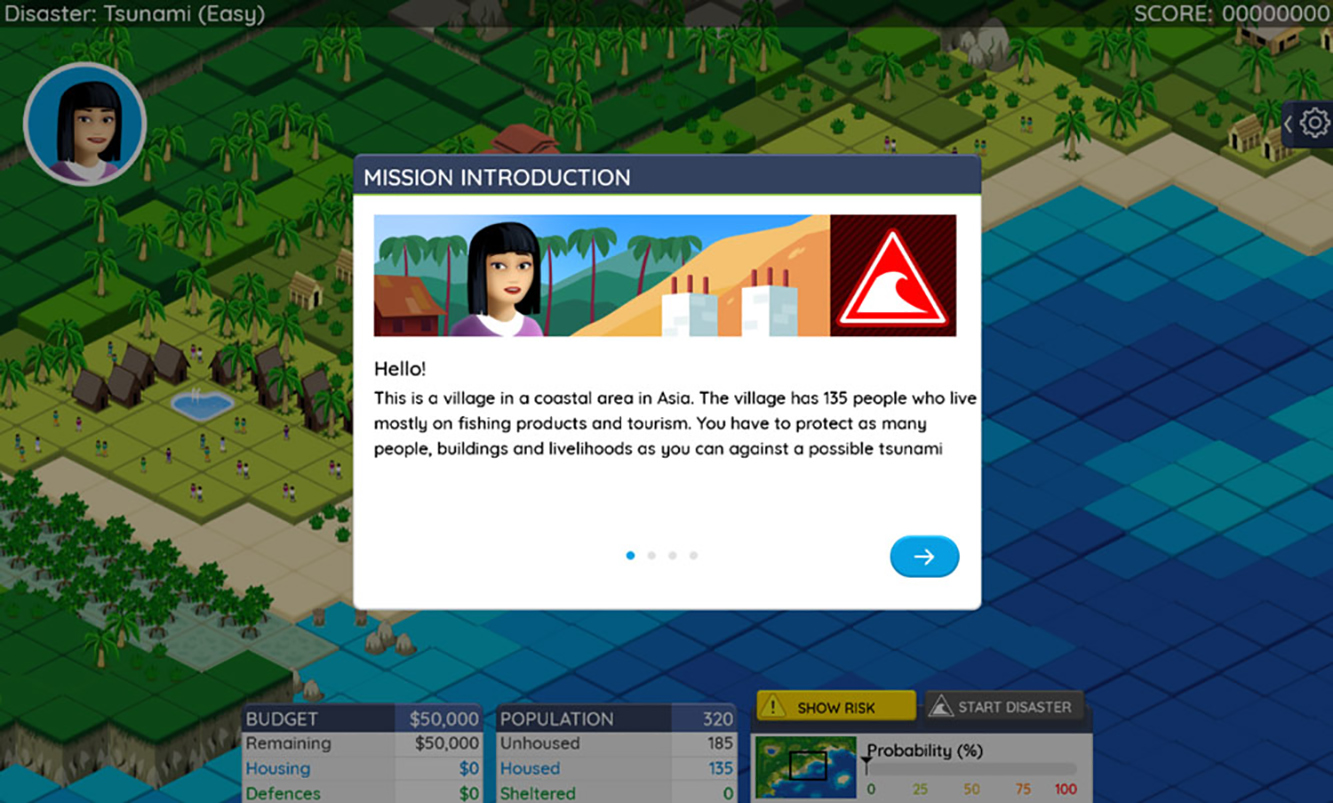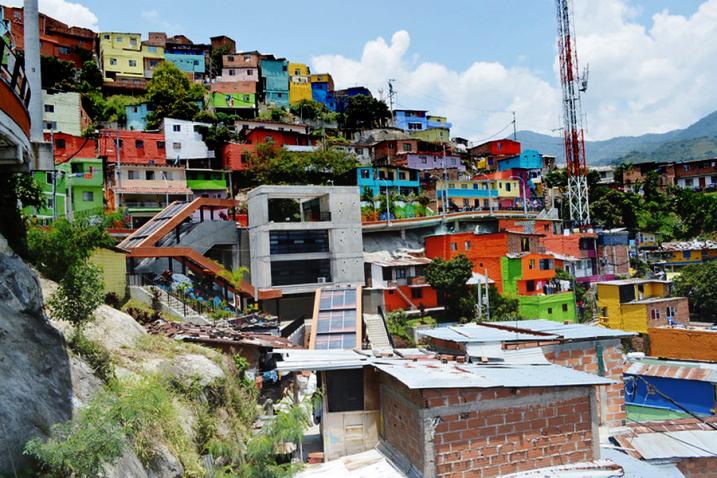International Day for Disaster Risk Reduction | United Nations (original) (raw)

A girl crosses a flooded street in Raboto, a slum in Gonaives, Artibonite, Haiti, after Hurricane Tomas.
Photo:UN Photo/UNICEF/Marco Dormino
Empowering the next generation for a resilient future
The International Day for Disaster Risk Reduction 2024 focuses on the role of education in protecting and empowering children for a disaster-free future.
Many disasters, often worsened by climate change, pose significant threats to the well-being of children and youth. UNICEF reports that around one billion children worldwide are at extremely high risk due to climate impacts and related disasters. In 2022, the number of children affected by flooding in Chad, Gambia, Pakistan, and Bangladesh was the highest in over 30 years. In addition to the risk of death and injury, children face further challenges in the form of disruptions in schooling, nutrition, healthcare, and protection issues in the aftermath of a disaster.
To protect children from disasters, countries need to consider their vulnerabilities and requirements when developing national and local disaster risk reduction strategies. It is equally important to empower children and youth and provide them with the opportunity to contribute to disaster risk reduction, as outlined in the Sendai Framework for Disaster Risk Reduction 2015-2030.
Empowering children, particularly through education, can equip them to protect themselves and become agents of change in their families and communities by sharing what they have learned. This is especially relevant in the context of the global effort to expand early warning systems under the UN Secretary-General’s Early Warnings for All initiative.
Check out the list of events around the world and participate.
We need to protect and empower children and youth
Have you ever wondered why disasters happen and what we can do to stay safe?
Are you Ready to help build resilience?
Get involved by activating your toolkit and creating your customizable card. Spread the word about empowering the next generation for a resilient future! Join the conversation around the International Day for Disaster Risk Reduction on social media to help raise awareness of the need for disaster risk reduction that includes everyone – especially those most at risk. Check out the list of events around the world and participate. 13 October is #DRRday #AreYouReady24
Play and learn to stop disasters
Learn how to build safer cities against disasters
This online game teaches children how to build safer villages and cities against disasters. Children learn through playing how the location and the construction materials of houses make a difference when disasters strike and how early warning systems, evacuation plans and education save lives.
Key messages
- Disasters are growing and impact the well-being of children and youth.
- Every child and youth deservesdeserve to be protected from disasters, especially at school.
- Schools have a critical role in promoting a culture of disaster prevention and empowering young people to understand and act on the risks they face.
- Early warning systems should be accessible to children and youth, so that no one is left behind.
- Building the preparedness of children and youth can help protect entire families and communities.
- Schools should be safe learning spaces, where children and staff are protected from ALL risks.
- Over 1 billion children have had their lives disrupted by disasters since 2000, with over 80,000 schools damaged or destroyed. Child rights must be protected for #safechildrensafeschools.
Background
The International Day for Disaster Risk Reduction was started in 1989, after a call by the United Nations General Assembly for a day to promote a global culture of risk-awareness and disaster reduction. Held every 13 October, the day celebrates how people and communities around the world are reducing their exposure to disasters and raising awareness about the importance of reining in the risks that they face.
In 2015 at the Third UN World Conference on Disaster Risk Reduction in Sendai, Japan, the international community was reminded that disasters hit hardest at the local level with the potential to cause loss of life and great social and economic upheaval. Sudden onset disasters displace millions of people every year. Disasters, many of which are exacerbated by climate change, have a negative impact on investment in sustainable development and the desired outcomes.
It is also at the local level that capacities need to be strengthened urgently. The Sendai Framework for Disaster Risk Reduction is people-focussed and action-oriented in its approach to disaster risk reduction and applies to the risk of small-scale and large-scale disasters caused by man-made, or natural hazards, as well as related environmental, technological and biological hazards and risks.
Did you know?
- According to UNICEF, approximately one billion children worldwide are at extremely high risk due to climate impacts, including climate-related disasters
- In 2022, the number of children affected by flooding in Chad, Gambia, Pakistan and Bangladesh was the highest in over 30 years
- Approximately 10% of schools across Europe are located in potential flood-prone areas (European Environment Agency 2022).
Resources
Websites
- United Nations Office for Disaster Risk Reduction
- UN World Conference on Disaster Risk Reduction, Sendai Japan
- Sendai Framework for Disaster Risk Reduction 2015-2030
- Sendai Framework Monitor
- Prevention Web
- UNOOSA: United Nations Platform for Space-based Information for Disaster Management and Emergency Response (UN-SPIDER)
- OCHA: UN Disaster Assessment and Coordination (UNDAC)
Documents
- Global Assessment Report on Disaster Risk Reduction 2024
- Sendai Framework for Disaster Risk Reduction (2015-2030)
- Hyogo Framework for Action (2005-2015)
- Framework for action for the Implementation of the International Strategy for Disaster Reduction (ISDR) (2001)
- General Assembly: International Decade for Natural Disaster Reduction
- General Assembly: International Strategy for Disaster Reduction
- General Assembly: Disaster risk reduction
Making cities resilient
Cities are the front lines in dealing with disasters and are a major emphasis of the Sendai Framework for Disaster Risk Reduction. They are particularly vulnerable to increasingly frequent and extreme weather hazards, such as storms, climate change impacts, including water shortages, environmental degradation and unsafe construction in seismic zones. Watch the Ten Essentials for Making Cities Resilient.
Why do we mark International Days?
International days and weeks are occasions to educate the public on issues of concern, to mobilize political will and resources to address global problems, and to celebrate and reinforce achievements of humanity. The existence of international days predates the establishment of the United Nations, but the UN has embraced them as a powerful advocacy tool. We also mark other UN observances.


